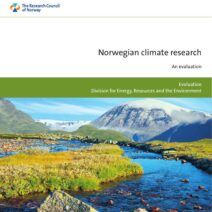Argentina, a vast expanse of land stretching from the tropics to the Antarctic, is an intricate tapestry of climatic zones. From the lush, fertile Pampas to the frigid winds of Patagonia, the nation’s climate plays an indispensable role in shaping its ecosystems, agriculture, and overall way of life. But how well do we truly understand the climatic variety that defines this remarkable country? As we delve into Argentina’s distinct climate zones, we face a challenge: grappling with the profound implications climate change may have on these delicate environments.
The Argentine climate is predominantly influenced by three key factors—geography, prevailing winds, and oceanic currents. At first glance, it seems deceptively simple: Argentina can be divided into five major climatic regions—tropical, arid, temperate, cold, and polar. However, within these broad classifications lies a complex interplay of microclimates and localized weather patterns that inform everything from agriculture to wildlife habitation.
Starting in the north, we encounter the tropical climate that thrives in the provinces of Misiones and Formosa. This area is characterized by high humidity, abundant rainfall, and a diverse array of flora and fauna. The lush rainforests of the Misiones province, which boast a staggering diversity of species, are a testament to the thriving ecosystems that flourish in these warm, moist conditions.
As we travel southward, the climate transitions to the arid and semi-arid conditions of the Gran Chaco and Cuyo regions. Known for hot summers and scarce rainfall, these areas are defined by their harsh weather patterns. The Gran Chaco is home to extensive dry forests and wetlands, playing host to unique wildlife and plants adapted to the limited water supply. Meanwhile, Cuyo, often referred to as the wine-growing heart of Argentina, benefits from the dry, warm climate that allows vineyards to flourish, transforming this region into a hub of viticulture. Could one argue that the wines produced here are influenced by the very climate they are nurtured in?
Traveling further south, we arrive at the temperate climate of the Pampas, Argentina’s breadbasket. This region, characterized by its fertile soil, is teeming with agriculture, supporting robust crops like wheat and corn. The Pampas’ temperate climate features distinct seasonal changes—hot summers and chilly winters that create a favorable environment for livestock as well. However, it is in this very region that the consequences of climate change begin to loom ominously. Increased temperatures, erratic rainfall patterns, and avenues for invasive species pose significant challenges to agricultural productivity. Are farmers in the Pampas prepared to adapt to the shifting climatic realities, or are they stuck in the traditional practices of yesteryears?
A further journey south leads us to the cold climate of Patagonia—a region that is a study in contrasts. This sprawling expanse, bordered by the Andes and the Pacific Ocean, is marked by strong winds and dramatic temperature fluctuations. The weather ranges from temperate in the north to freezing in the south, where the landscape becomes increasingly barren. Yet, despite these harsh conditions, Patagonia contains some of the most stunning natural scenery in the world, including vast glaciers, imposing mountain ranges, and rich biodiversity. However, climate change presents an existential threat to Patagonia’s unique ecosystems; as glaciers recede, wildlife faces unprecedented changes in habitat. How resilient are these ecosystems, and can they withstand the escalating temperatures and shifting precipitation patterns?
Finally, venturing even further south, we enter the polar climate zones of Tierra del Fuego, the southernmost tip of Argentina. Here, the landscape is dominated by subantarctic forests, tundras, and dramatic coastlines. Expressing an exquisite harmony between land and sea, the ecosystems in this region are exceptionally fragile. Extreme winds and low temperatures dictate the growth of vegetation and the behavior of wildlife, all the while accentuating the sublime beauty of the landscape. It raises the thought: in the struggle against climate change, can humanity learn to appreciate and protect these pristine environments before they disappear?
In summary, Argentina’s climatic regions represent a rich mosaic that continually shapes the nation’s identity. Yet, with climate change casting its ominous shadow over the landscape, it is crucial to understand and address these shifts before they irrevocably alter the country’s environmental fabric. The challenge lies not in merely recognizing these climatic distinctions but in mobilizing resources, awareness, and policy changes to safeguard this incredible biodiversity.
As we navigate the complexities posed by an unpredictable climate, we must be mindful of our responsibilities as stewards of this incredible land. The question remains: How can we collectively rise to meet the challenges of a changing climate while celebrating the diverse tapestries that make up Argentina?


